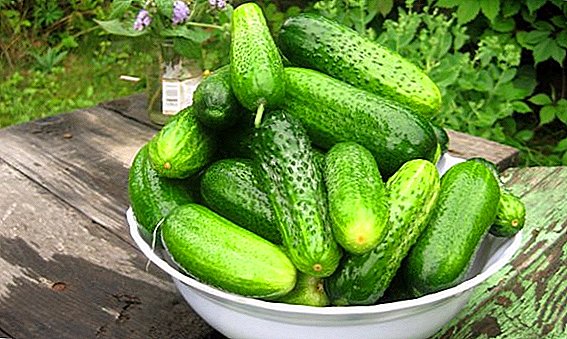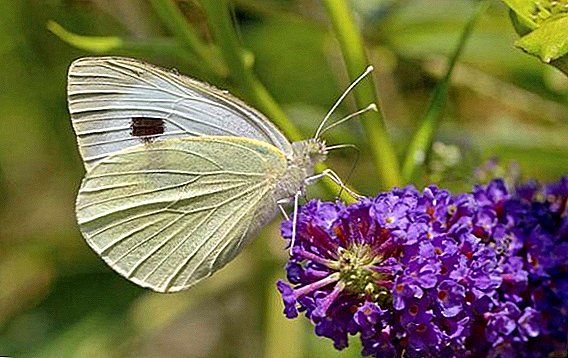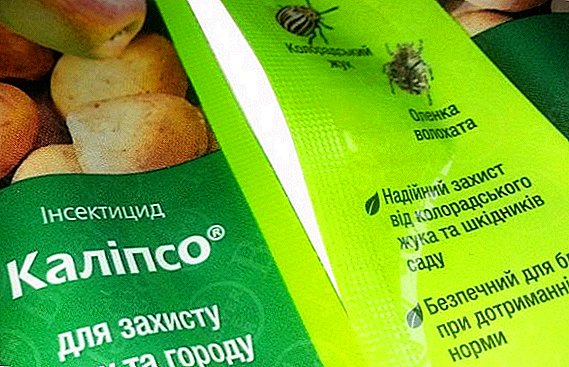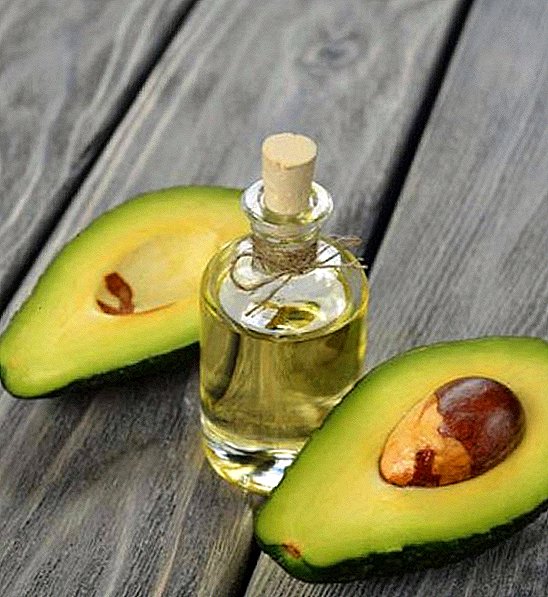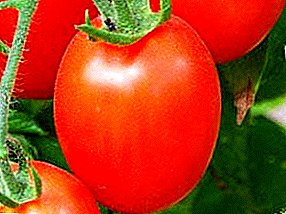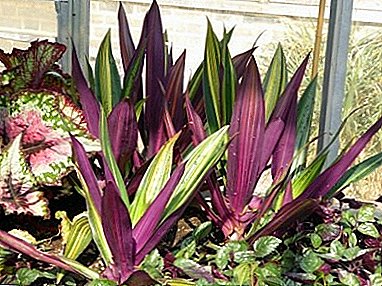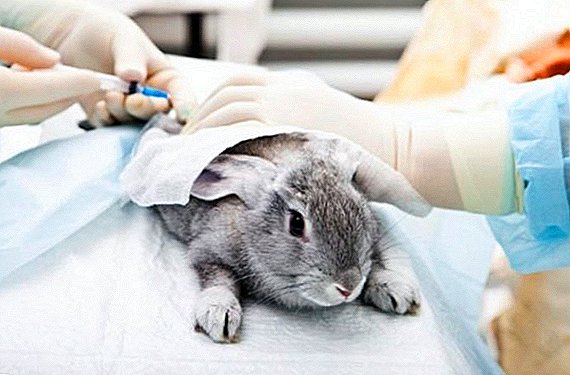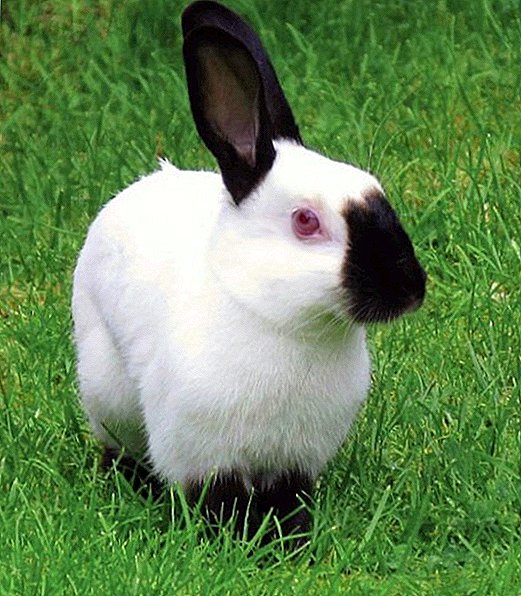 Breed of rabbits Russian ermine belongs to the most ancient breeds. “Ermines” are distributed not only in Russia, but also in China, Africa, Egypt, etc. They are grown because of the beautiful thick and pleasant to the touch, resembling silk, fur. Skins are often used to imitate ermine, despite all the difficulties of breeding these animals. Next, let's talk about the features of the maintenance and care of these eared.
Breed of rabbits Russian ermine belongs to the most ancient breeds. “Ermines” are distributed not only in Russia, but also in China, Africa, Egypt, etc. They are grown because of the beautiful thick and pleasant to the touch, resembling silk, fur. Skins are often used to imitate ermine, despite all the difficulties of breeding these animals. Next, let's talk about the features of the maintenance and care of these eared.
Breed origin
Himalayas are considered to be the homeland of the ermines. They became known to the world only in 1857. The breed was brought to the territory of the Russian Federation only in 1928. After the work of breeders on the characteristics of English ermine, representatives of the Russian breed found a more dense and smooth fur, as well as a large body.
They were transferred to the category of meat and skin and officially registered. To date, there are only two types of Russian "ermines": large and ordinary.
External characteristics
Ermine rabbits are born completely snow white. There are no spots or other identifying marks on them. Marks appear only with age - brown, black or bluish color spots on the white body.
We recommend that you familiarize yourself with the description and characteristics of the content of such meat-skinned rabbit breeds as Ober, Risen Gold, Poltava Silver, Rex, Belgian Giant and Viennese Blue.
The body of the representatives of this breed is downed, strong, about 50-53 cm long. The head is small, rounded. Ears - upright. Breast - wide, up to 35 cm in girth. Paws - straight, strong.
In adulthood, an animal weighs 3.5–4 kg: the usual Russian ermine rabbit reaches 2.5–3 kg, while the large Russian animal weighs 4–5 kg. Regarding the density of wool, on 1 square. m body grows up to 22 thousand hairs. Fur coat - soft, smooth, dense and glossy. 
Breed virtues
Among the main advantages of the breed worth noting:
- high quality fur;
- quick acclimatization;
- strong immune system;
- good taste of meat.
Important! The rabbit must have a wide and deep breast and firm muscles.
How to choose a good ermine rabbit
When choosing an ermine, use the following rules:
- The animal must be purebred.
- Do not purchase the animal without assessing its appearance. Pay attention to its weight and physique parameters, the level of core strength, the development of muscles and the overall harmony of the exterior.
- Ears, eyes and nose should not signal the presence of any disease.
- The animal must be active.
- The quality of the fur should be checked for density: inflate it against growth and look at the "outlet".
- On the paws should be "knee socks" to the knee.

Content and care
For a comfortable living rabbit you must create certain conditions:
- Light the room with lamps of moderate brightness (40 V) for 12 hours a day. Air temperature should be within + 10-25 ° С, relative humidity - 65-75%.
- The best option is cellular content. The recommended length of the cage is 60 cm. The material is metal. The floor must be lath or net, and under the nest - solid.
- The cage is additionally equipped with a house to create a nest, a feeder and a drinker.
- Rabbits' residence should be cleaned regularly, replacing litter and disinfecting.
- The animals are bathed only with a special zoological shampoo without a sharp smell. Hair can be brushed with a metal brush with plastic balls on the bristles. Grooming rabbits are not required.
Important! Examinations at the veterinarian should be regular, and vaccination - timely. Inattention to the animal can cause its death.
What to feed
Not only the state of health and the level of its development, but also the quality of its wool depends on the food that the rabbit consumes, so the diet should be balanced and complete. It should be noted that it depends on the season: in summer, its main part consists of green fodder, vegetables and fruits, and in winter - hay and straw. 
Summer diet
In the summer season, the rabbit's diet should consist of:
- concentrated feed containing a large amount of vitamins and minerals (daily serving size - 50 g);
- herbs: burdock, nettle, tansy, plantain (an adult rabbit should consume up to 1.5 kg of grass per day, 0.5 kg is enough for a rabbit);
- coniferous branches of 0.1-0.2 kg per day to strengthen the teeth and enrich the body with vitamins;
- salt in the amount of 1-1.5 g per day;
- vitamin-mineral complexes (according to the instructions).
Did you know? The heaviest rabbit in the world is Ralph (UK). Its weight exceeds the mark of 25 kg.Dairy waste, bone meal, mixtures of leguminous plants with clover, peas, oats and alfalfa can also be added to the diet. Thus, it is possible to reduce the consumption of grain.

Winter diet
In winter, animal nutrition should be treated more carefully:
- The daily dose of concentrated feed is increased to 60 g.
- Juicy feed (vegetables and fruits) is recommended to be given in the amount of 0.15-0.2 kg per day.
- The size of the daily portion of roughage (hay, straw) should be 150 g.
We recommend reading about how to feed rabbits in winter, and also find out whether it is possible to give a rabbit pear, grapes, Jerusalem artichoke, pumpkin, beets, peas, corn, bran, bread and tree branches.
During this period, they continue to give the rabbits coniferous branches, salt, vitamins and minerals, closely monitoring the health of their pets.
Video: how to feed rabbits in winter
Breeding rabbits
For breeding, only individuals with characteristics that meet the standards are suitable. They must be active, strong and healthy. Animals with signs of obesity for breeding can not be taken. The optimal age is at least 7-8 months old.
Purebred couple leads up to 8 babies. The female is able to feed the babies on their own. Representatives of this breed have well-developed maternal instincts.
Did you know? Pregnancy at the rabbit lasts 30 days.
Russian "ermines" - snow-white rabbits in "golfiki" with the most valuable fur. Start breeding this breed is a careful selection of animals. They must be healthy, active and fully standards compliant. 
The ermine has good immunity, but it is still necessary to monitor their health. If you create all the recommended conditions for keeping and ensuring quality care for these animals, there will be no problems with them.


